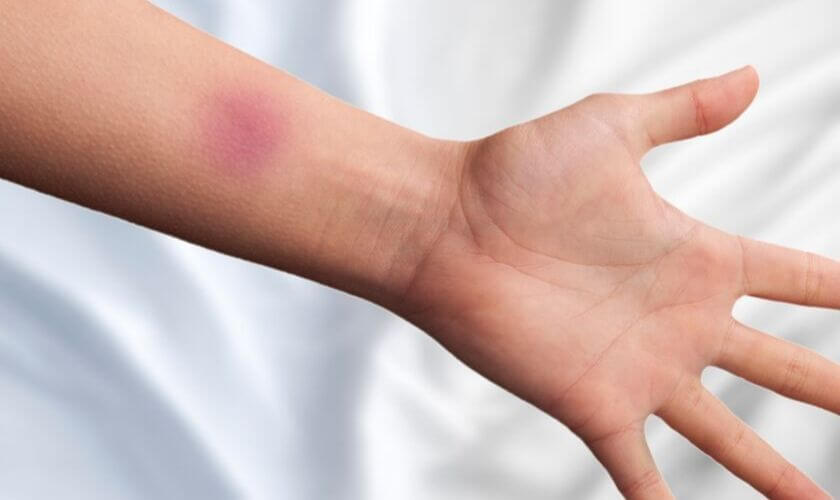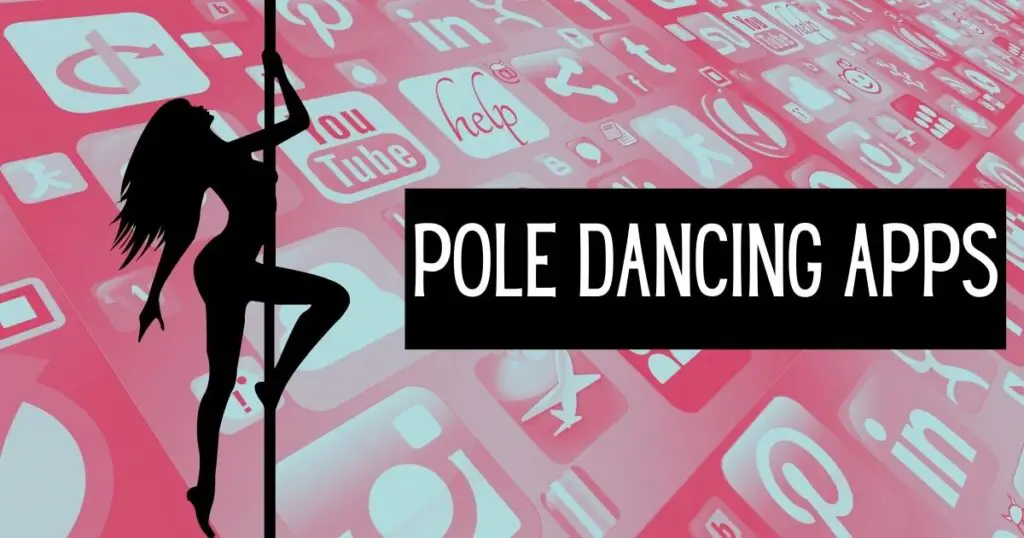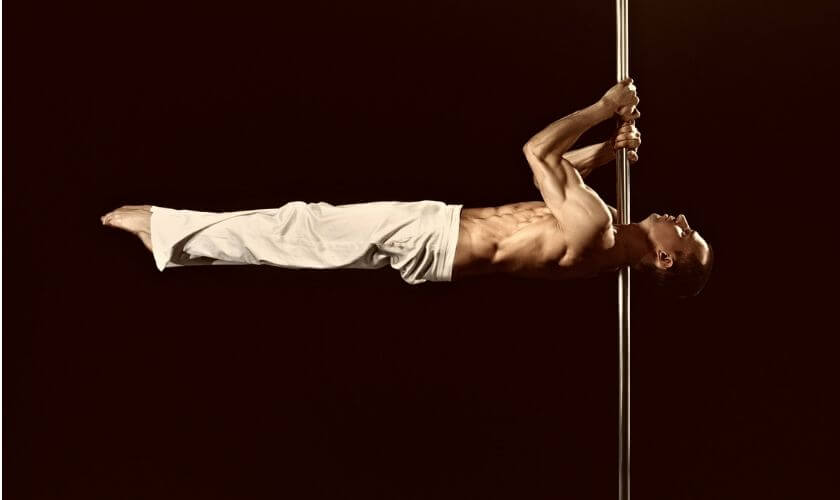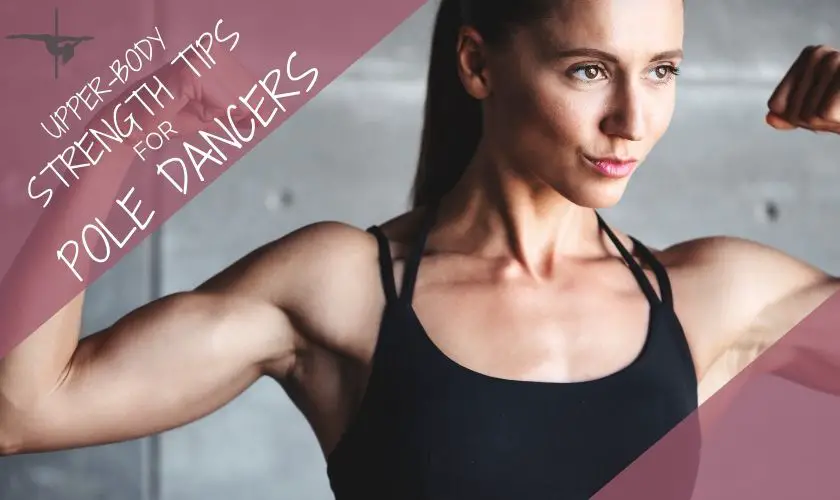Last Updated on February 5, 2023
Pole dancing bruises, friction burns and sore muscles are just some of the things that you’ll face along your pole journey. Many pole dancers even wear their bruises with pride, like badges of honor.
Contents
Sadly, a few knocks and scrapes are almost inevitable when you’re pole dancing.
Due to its very nature, pole dancing is a form of exercise that relies on pressure and grip, which is why pole dancing requires so much skin and such little clothing!
With that comes the increased risk of bruises and friction burns. Even though it’s bound to happen to every pole dancer, there are ways to deal with these common problems.
So, we’ve written this complete guide on how to care for your pole dancing bruises and various other injuries to help you get the most out of your pole fitness journey!
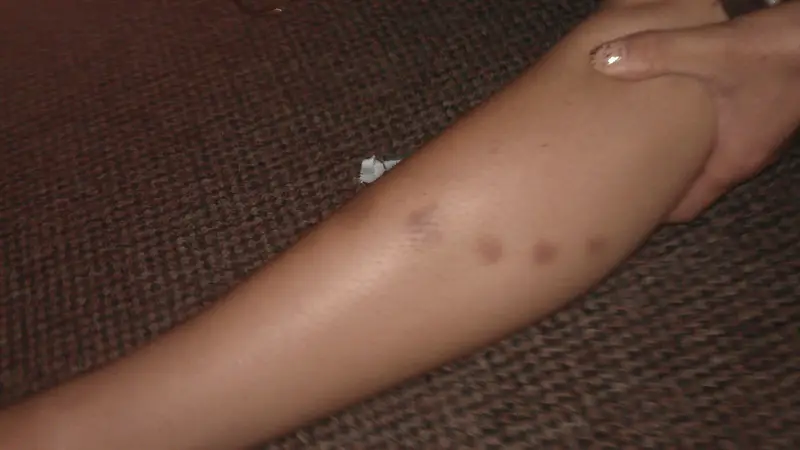
How To Care For, Treat & Prevent Pole Dancing Bruises, Friction Burns & Other Injuries Caused By Pole Dancing
Are You Learning To Pole Dance?
Check out our complete guide on pole dancing for beginners – this covers everything that you need to know about pole dancing for fitness (and more!)
Aching Muscles and DOMS
When I first started pole dancing, I had aches in muscles that I didn’t even know existed. During a pole dancing workout, you’re putting a lot of stress on your muscles, so it’s completely normal to have aching muscles for a day or so afterwards.
This is called DOMS, or Delayed Onset Muscle Soreness. DOMS happens when you’ve caused damage to the small muscle fibres, essentially causing loads of tiny rips your muscles.
The soreness is caused by those tiny rips being stitched back together. Our bodies are great at healing themselves!
Although this sounds scary, it’s actually a sign of your muscles getting stronger and more resilient.
Each time you ‘tear and repair’ your muscles, they become used to the strenuous exercise and make it easier in the future.
So, the more often you exercise, the less sore you’ll feel in the long run!
DOMS feels like a dull ache, with tenderness and some muscle stiffness. It usually lasts for 48 hours but can sometimes take up to 7 days to completely go away.
It’s nothing to worry about, but it can feel uncomfortable. Fortunately, there are a few things that you can do to help.
See also: Does pole dancing hurt? A guide to pole dancing and pain
How To Treat DOMS
Anything that increases blood flow to your muscles will help ease the symptoms of DOMS. There are a few things you could try, such as:
- A hot shower or bath – a nice way to relax at the same time
- A sauna – if you have access to one, that is
- Gentle exercise, try not to rest too much, it can be detrimental!
- Gentle stretching (being careful not to overstretch)
- Hot water bottle
- Massage – for the ultimate luxury
Also, try this reusable heat therapy pack for sore muscles.
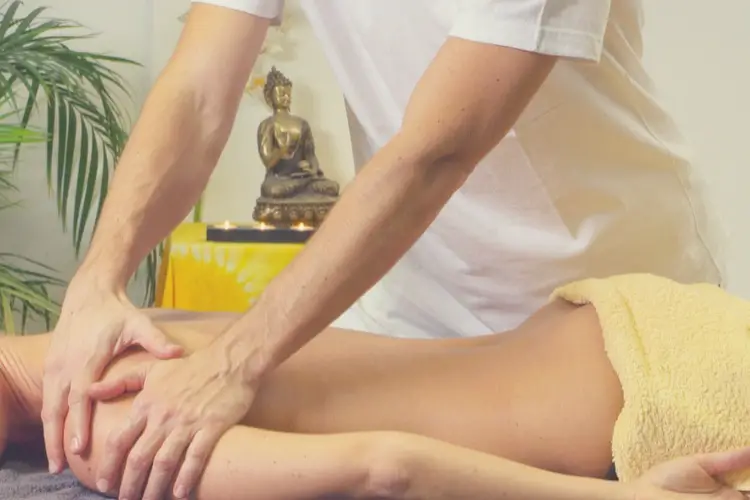
These things will not make the symptoms and soreness completely go away, but it will definitely reduce the soreness and make you more comfortable. Keep telling yourself that the ache is temporary and that it is making you stronger!
You can also take simple over-the-counter painkillers, such as Ibuprofen or Tylenol. Many people also use pain-relieving gels, such as Volterol to treat DOMS.
Will Rest Help?
Sort of. The thing with muscles is, they’re stiffer when they’re cold, which is why having a bath or shower helps ease the symptoms. It’s often better to keep your muscles warm to prevent them from seizing up (as if you’ve slept in an awkward position for several hours).
How To Prevent DOMS
The most important thing to do is to gradually increase the intensity of your pole dancing workouts. Don’t try to run before you can walk – or don’t try to Brass Monkey before you can do a Chair Spin, etc.
It can be really tempting to try harder moves, especially when you start to see your strength improve. However, by doing so, you’re ripping your muscles in ways they’re not ready for yet.
Stick with your strength building, when you no longer feel pain the day after a pole workout, that’s when it’s time to step it up.
There is also evidence to suggest that including Turmeric in your diet can reduce the symptoms of DOMS.
Related: 5 simple ways to recover from DOMS
Pole Dancing Bruises
Another common injury pole dancers will experience is bruising. Sometimes, students rock up to class and their legs are black and blue – we call them pole kisses.
While these pole dancing bruises can look nasty, they’re often manageable and go away within a few days. If you have a bruise that hurts more than usual or is bleeding externally then seek medical attention.
There are different types of pole dancing bruises (pole kisses) that occur, these are bruises caused by doing things like knocking your ankle against the pole and pressure bruises.
Bruises From Knocking The pole
This is very common for beginners to do when learning to spin or invert. When trying to gain momentum, sometimes you’ll be concentrating so much on what one leg is doing, your other leg is free to swing around, leaving your knee or ankle to knock against the pole.
Sometimes a bruise appears, sometimes it doesn’t! You may see a bruise pop up, and other times you won’t even know it happened. Either way, keep on twirling and flipping, you got this!
Pressure Bruises
These are very common for pole dancers of all levels, especially when you’re learning a new move. These bruises are caused when you’re squeezing part of your body into the pole.
Most beginners will first experience this when learning a pole seat or a climbing step-up, leaving you with nice bruises on your inner thighs and top of your feet.
How To Treat Pole Dancing Bruises
There are several natural ways to ease the pain and swelling of a pole dancing bruise. Ultimately, it will need time to heal but there are a few things you can do to sooth the pain of a bruise.
Avoid Aspirin
Aspirin is a blood-thinner, so it will take longer for pole bruises to heal if you’re taking aspirin.
Arnica Gel
Arnica gel really is a godsend. The sooner you apply it to the bruised area, the more effective it will be.

Arnica gel contains helenalin, which is an anti-inflammatory and will help with swelling. This has been an effective way to reduce bruises for centuries.
Always carry Arnica gel in your bag if you’re worried about getting unsightly bruises from pole dancing!
Ice Or Cold Compress
Again, you should do this as soon as possible after a bruise, and never hold ice directly on your skin – wrap it up first and hold it over the bruise.
You can repeat this as necessary.
Aloe Vera Gel
Like Arnica Gel, Aloe Vera Gel contains natural anti-inflammatory properties and will help reduce swelling over time.

Apply it directly to the bruised area and repeat as needed.
Covering Up Pole Dancing Bruises
Even though covering the bruise isn’t going to help it heal, it can make you feel less conscious. If you’re wearing a cute outfit, you don’t want to feel conscious of your pole bruises.
You can cover your bruises on your body with something like this Boo-Boo Cover-Up Concealer. Or, try this new Bruise Away Balm, which contains Arnica gel too, so it will both heal and conceal your pole dancing bruises!
How To Prevent Bruises When Pole Dancing
Bruises happen to pole dancers of all levels, usually by overdoing it in some way. Here is some advice for you to prevent getting so battered and bruises while pole dancing.
Don’t Rush!
If you’re learning a move for the first time, or you’re not confident with a move then take it slowly to reduce the risk of getting a bruise.
Make sure you know where the points of contact will be. Your instructor should tell you where it will pinch before you attempt the move so you know what to expect.
See also: So, when can I invert?
Don’t Over-Do It
Sometimes, you can’t practice a move over and over again as your poor bruised skin can’t take it anymore. That’s definitely a sign that you should give that move a break for a while, at least until the bruises have healed.
With moves such as armpit holds and knee holds, they’re painful enough as they are, without adding weight-bearing pressure on an existing bruise.
Work On Building Your Strength
Remember how muscles become more resilient as you exercise?
Well, your skin becomes more resilient to bruises too! As you work towards more difficult pole moves, you’ll use what you learned earlier on in your pole journey to work your way up to more challenging tricks.
See also: How to build upper body strength for pole dancing
Wear Knee Pads
Wearing knee pads while pole dancing can provide a number of benefits. They can protect your knees from abrasions and bruises that can be caused by sliding and grinding on the pole.
Wearing knee pads can give you added confidence and peace of mind, knowing that you have an extra layer of protection in case you happen to misstep or lose your balance.

So, if you’re planning on hitting the pole, don’t forget to slip on a pair of knee pads – your knees (and your body) will thank you!
See also: How to protect your knees when pole dancing
Friction Burns
Friction burns are like pressure bruises and are caused in a similar way – by tightly gripping the pole with our bare skin.
Watch out for carpet burns too!
As we mentioned in our Pole Dancing Safely At Home Guide, carpet burns can happen if your pole is on a carpeted floor. They’re more likely to happen if you’re doing a lot of spins or floorwork – so, be aware!
Blisters On Your Hands
Blisters are seriously nasty, and they can cut your pole workout short as you could end up totally unable to grip the pole without being in agony.
See also: The physics of pole dancing
How To Prevent Blisters When Pole Dancing
There are a few things you can do to reduce the risk of blisters when you’re twisting and spinning around the pole:
Loosen Your Grip
It’s common to do a death grip when learning a new move. We see it when beginners first learn to spin on a static pole, their bodies move but their hands stay put, leaving them with a higher chance of getting blisters.
If this is you, you’re simply gripping too hard during the spin.
Stop Using So Much Grip Aid!
The grip aids cause more friction between your skin and the pole so that you’re less likely to slip.
This is great for practising static moves, but for routines and anything with more flow and movement, the grip aid will slow you down.
Want to become an amazing pole dancer?
Open Dance Academy has over 450 online lessons, by some world famous pole dancing champions! Join now to get:
***GET 10% OFF OPEN DANCE ACADEMY***
Use the code polefitfreedom to get 10% off Pole Dancing Lessons with Open Dance Academy. This is an exclusive offer for readers of this blog!
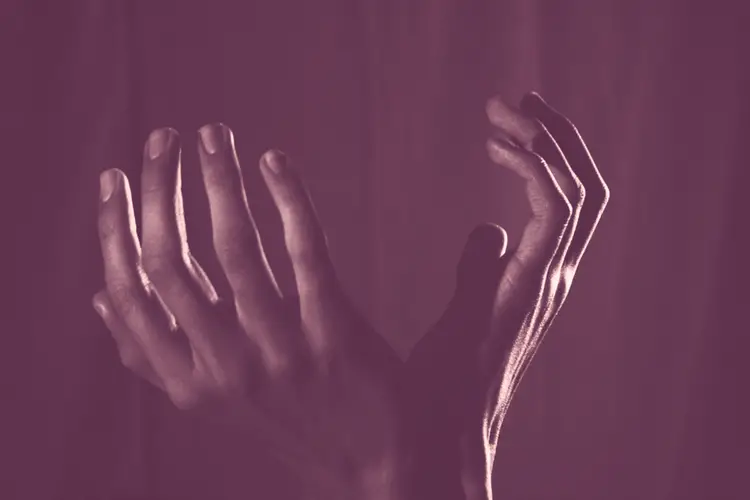
If your hands are sticking to the pole when you want to freely rotate when you’re using grip aid, try using less to see if it makes a difference.
Related: Every Single Pole Dance Grip Aid Reviewed, Ranked & Compared!
How To Treat Blisters
You just need to let them heal. Blister Plasters are good, the cheap ones are not worth it though. These Compeed Blister Plasters are great and they stay put for days.
More Serious Injuries
If you’ve suffered a more serious injury during a pole dancing session than the ones listed here, or you’ve got a pain which has lasted longer than you expected it to, you need to seek medical advice and stop using Google instead of seeing a healthcare professional!
Fortunately, serious injuries from pole dancing are very rare, despite its dangerous appearance. Most pole dancers take extra care to make sure they can safely perform a trick before attempting it.
It’s also sensible to take precautions such as using a crash mat designed for pole dancing (like this one, from Amazon), always having a spotter and by not overdoing it.
Related: Pole Dance Safety 101
Pin This Post
Pin this image to save this article for later:
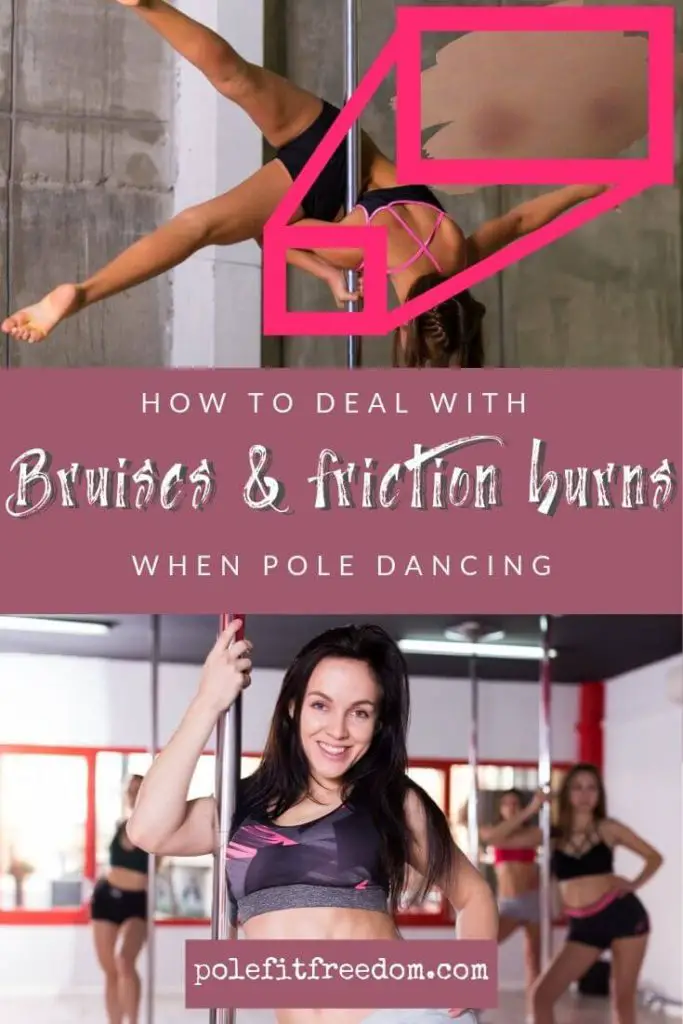
Happy poling!

